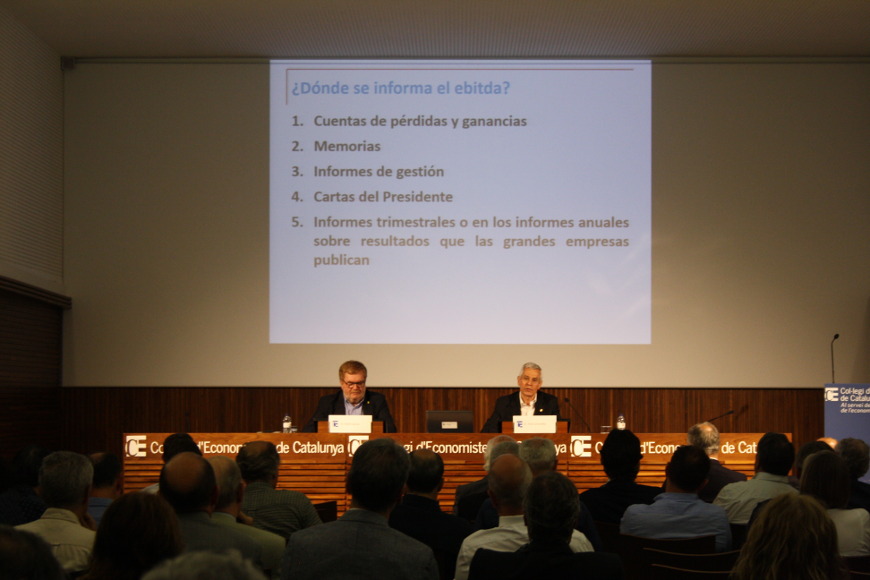Emili Gironella, numerary member of the Royal European Academy of Doctors – Barcelona 1914 (RAED), holder of a doctorate in economics and business science and an auditor of renown, gave a lecture on 14 June at the Catalan Association of Economists, entitled L’ebitda, indicador útil o inútil? (“EBITDA: a useful indicator or useless data?”), in which he addressed and expanded on the conclusions of an article of the same name published jointly with María del Carmen Barcons, professor of financial economics and accounting at the University of Barcelona, in the Revista Técnica Contable y Financiera, an academic journal that covers the technical aspects of accounting and finance.
The acronym “EBITDA” refers to earnings before interest, taxes, depreciation and amortisation. In other words, it is a figure that seeks to express gross operating profit before the application of tax to those profits, which are the basic objective of any company. His presentation included, in addition to an explanation of what EBITDA is and how it is calculated, special reference to the application of EBITDA in the world of business, with particular focus on how it is used to value companies.
“Company valuation is a very complicated process, and one possible method is to employ so-called ‘EBITDA multiples’, which are widely used in the business world by virtue of their simplicity and ease of application,” said Dr Gironella. This method calculates the value of a company based on estimated multiples of comparable companies, starting from the premise that two or more companies with similar characteristics, regardless of the fact that they are obviously different in various other respects, must have a similar EBITDA multiple”.
Dr Gironella nevertheless wished to contextualise this method: “There is no unique multiple for the valuation of companies, because we all know that there is no philosopher’s stone that will allow us to understand everything or understand it well. It is however often generally accepted that we can value a company by applying a multiple of its standardised or recurrent EBITDA to find a rating between a minimum of 5 and a maximum of 10. The ‘magic’ of this company valuation based on EBITDA multiples lies in the fact that it is commonly accepted by financial analysts and then becomes a self-fulfilling prophecy, given that the market valuation is but a consensus of people involved in the same process”.




